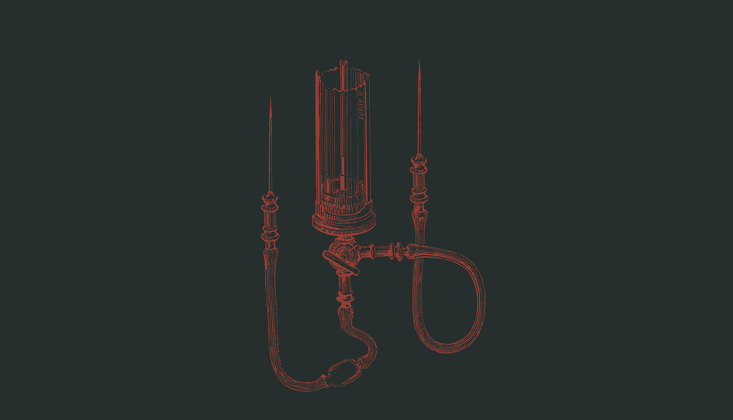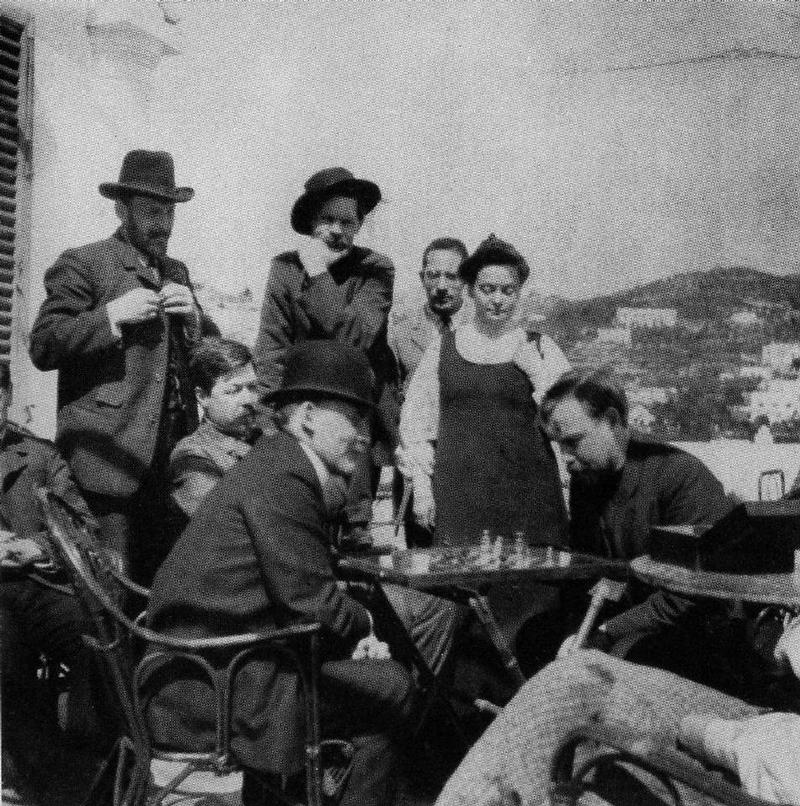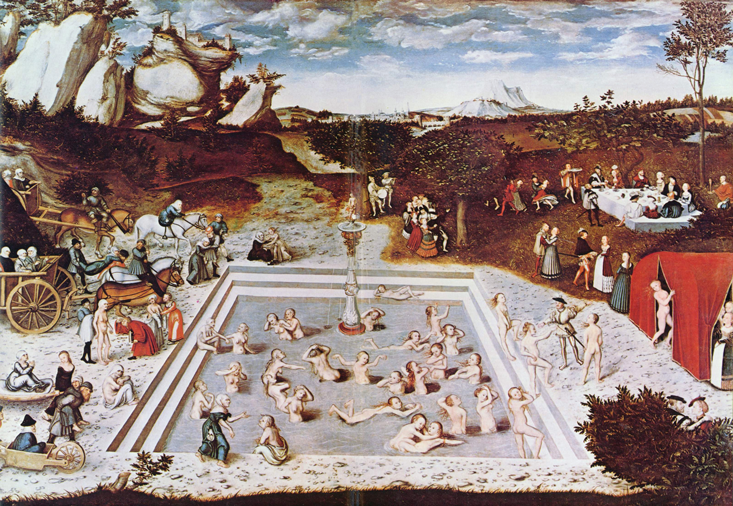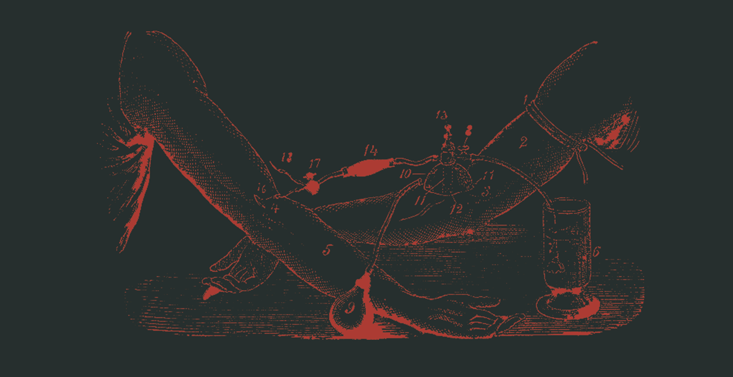In search of young blood
Science has revived ancient thirst

“A vampire lives and cannot die because of the simple passage of time,” Abraham van Helsing from Dracula tells his colleagues. “He can feast on the blood of the living. And moreover, as we observed, he may even look younger ... "
The great Gothic novel did not invent the idea of rejuvenation with the help of blood. It was based on an opinion that persists from the times of the myths of ancient Greece, passing through the days of early Christianity - and, oddly enough, has survived to the present day. Van Helsing, telling his methods of capturing and destroying Dracula, informs his comrades that there is a special power on their side, “the power beyond the reach of the vampire family” is the power of science. Noteworthy is the irony of the fact that over the past decade, some scientists have sided with vampires and provide evidence that the blood of young people, poured into old people, can enhance the "life skills" and delay aging.
Bram Stoker was writing at the time when science began to object to generally accepted superstitions and religious beliefs. In the modern resurrection of interest in the rejuvenating power of blood, does science work as it should, or does it take a step back to familiar superstitions?

The Vampire, Philip Burne-Jones, 1897.
The myth of the blood that gives eternal life gave rise to the first stories about vampires, moralistic mixtures that tell about sex and its consequences. Rudyard Kipling, inspired by the picture above, begins his vampire poem of 1897 as follows: “Once upon a time there was a fool. He prayed seriously
In each of our bodies 4-5 liters of blood flow, ranging from rosy cheeks and ending with bluish veins branching along our hands. The first people who considered this liquid source of life were the ancient Greeks. Hippocrates, Greek doctor 400 BC and the father of modern medicine, believed that our bodies are controlled by four fluids, "humors" - blood, phlegm, black bile and yellow bile. It was believed that humors affect our personality, emotions, behavior and age. The ancient Greeks thought that the heat of bright red blood is so important for life that they considered it the source of this life.
Roman poet Ovid in 8 AD has published information about the first regenerative blood transfusion. In his poem Metamorphosis , the witch Medea cuts the old man’s throat and bleeds him. Then she filled the “ancient veins with a rich elixir” that enlivened him. This elixir was not blood - it was a mixture of roots, plants, seeds, flowers and other things. But the meaning remains the same: the “new blood” gave him “the energy of a joyful youth”.
The Greeks did not lag behind Ovid [the author had in mind the Romans - approx. trans. ]. After the gladiatorial battles, the audience rushed to the stadium in an insane desire to drink blood from the wounds of the fighters in order to gain strength and courage, which probably flow in their veins. In 77 AD Pliny the Elder described that these obsessed viewers reminded of “wild animals” in the arena, in a hurry to “take warm, living blood from a person”. They pressed their lips to the wounds of the gladiators, hoping to suck the medicine straight from its veins.
By the 15th century, people began to try more direct methods. After other attempts to remove Pope Innocent VIII from his stupor failed, a physician with low qualifications called Abraham Meyer led three young shepherds of 10 years old, chosen as victims, to his bed for each duat. According to legend, he tried to transfer their blood to the Pope, and the blood of the Pope - in them. All of them soon died. [This legend has no serious evidence, and some consider it a story based on anti-Semitism - approx. trans.].

Scary, but the real device of the XIX century for blood transfusion, used by doctors of that time. Dr. Joseph Roussel of Geneva wrote in 1877: "The great vitality of the blood of an energetic and healthy person can improve the quality of the patient's blood."
Yet the myth of rejuvenating blood did not die. At the end of the 16th century, German physician Andreas Libavy wrote that a blood transfusion of a young and healthy person into the veins of a sick old man could “give him a source of life and ward off fatigue.” At the beginning of the 20th century, the role of young blood as an antidote to aging pervaded the philosophy of Alexander Bogdanov [the real last name was Malinovsky. He was a Russian scientist and encyclopaedist, revolutionary figure, doctor, utopian thinker, science fiction writer, one of the greatest ideologues of socialism. Since 1926 - the organizer and director of the first in the world Institute of blood transfusion; died, making the experience. / approx. trans.]. He treated young blood transfusions almost like a metaphysical experience. It was ambrosia, able to revive even the most worn human body. In 1908 he wrote a fantastic tetralogy describing a utopian communist society on Mars. He had Martians who lived almost twice as long as people on Earth, pouring on young blood and extending their youth. He came up with the concept of "blood brothers", in which all members of society shared their blood.

V. Lenin plays chess with Bogdanov, during a visit to A. M. Gorky in Capri, Italy, in 1908.
By the spring of 1928, Bogdanov experienced 11 blood transfusions, being sure that they improve his cognitive abilities, eyesight and turn baldness back. In that year, changing the liter of his blood to the liter of blood of a 21-year-old boy, Bogdanov died of the 12th, the last transfusion [according to information from the Literary Encyclopedia, it was the 11th transfusion - approx. trans.].
In the work “Faust”, Goethe writes that “Blood, you need to know, a very special juice” [Translation: Boris Pasternak]. However, most of its history, people did not know about its true features. Already in the XVII century, scientists began to realize that blood consists of separate components, each of which carries a certain function in the body. But I had to wait for breakthroughs in modern medicine to determine these functions and how they can be used for transfusions.
If you spin the blood in a centrifuge, it will be divided into three layers. The lower layer consists of red blood cells carrying oxygen from the lungs to the organs of the body. The top layer, translucent pale yellow - is plasma containing coagulants, proteins - carrying vitamins and minerals throughout the body - and antibodies, proteins that work together with the immune system in the fight against infections. Without plasma, other cells would not have a fluid to travel through. Between them are pale yellow platelets and white blood cells, which help the blood to clot and provide immune protection, respectively. And any of these elements can be replaced during the transfusion.
After the clumsy attempts of past centuries to transfuse blood between dogs, lambs, and as a result, people, the 20th century witnessed a revolution in blood control, storage and use in medicine. In 1901, the Austrian physician Karl Landsteiner discovered the first three blood groups, A (II), B (III) and C (I) (the latter later became known as 0), and received the Nobel Prize for his work. A year later, two of his colleagues, Alfred von Decastello and Adriano Sturli, added a fourth blood type, AB (IV). Now, instead of blood transfusions from friends, relatives and random people, doctors could determine the blood type of the donor and combine it with the patient's blood type. Their discoveries laid the foundation for manipulation and even the manufacture of human blood for transfusions.
Modern interest in the renewal of blood appeared in the 1990s. Then Michael and Irina Konboy, a researcher and adjunct professor of biotechnology at the University of California at Berkeley, began to explore one of the biggest questions in the study of aging: why do age and body organs age together?
“The first question that arises on this topic is what all the tissues have in common, and the answer is the circulatory system,” says Michael Conboy. Blood circulates through the veins and arteries in the body. Since this system delivers all the nutrients to body tissues, isn't this what makes blood the main suspect? “We decided - what if you take a mouse, pump out all the old blood and pump young blood?” He says. “Will it make her young again?”
According to Konboy, with aging, more and more inflammatory processes occur in the body due to inflammatory signals in the blood. Another important age-related change is associated with cellular aging , in which the cells of the body cease to divide. Aging cells accumulate in tissues and organs during aging, which leads to cancer, other diseases and other age-related malfunctions. To check whether these negative changes could be reversed, Konboy turned to mice.
In 2005, working with a team of researchers at Stanford, Conboys published a study in the journal Nature, where they demonstrated the effects of heterochronic parabiosis — the blood systems of two mice of different ages sewn together. The researchers removed pieces of skin from young and old mice and sewed them together in the manner of Siamese twins. The age of the young mouse was 2-3 months, and the old - 19-26 months. By human standards, they were something like 20 and 70 years. Growing together, the mice spliced their blood systems, and the blood of one flowed unhindered into the other.
As a result, old mice were able to recover faster from injuries and demonstrated an increase in the number of cells in the liver and hippocampus - usually in old mice everything happens the other way around. It seemed that the effects of aging are reversing - although it was unclear whether it is only the blood that affects it. The circulatory system of the old mouse had access to the organs of the young, which could help regulate the metabolism of the old, help it recover faster and provide the necessary hormones and nutrients. There were other possible unforeseen circumstances of such cohabitation. Sometimes a young mouse dragged her old cage behind her, forcing her to exercise more.

Stanford neuroscientist Tony Weiss-Korey spoke at the 2015 TED conference against the backdrop of this 16th-century painting “The Source of Youth” painted by Lucas Cranach the Elder . He declared: “I don’t think we can live forever, but we may have discovered that the source of youth is within us and that it’s just dried up.”
In November 2016, Michael and Irina Konboy published a study in the journal Nature Communications, which described the effects of a single blood exchange in young and old mice, when they mixed their blood in equal shares. In this case, the mice were no longer stitched together, as in 2005. Konboi developed a new device that helped to unite and separate mice at will, and eliminated the effect of organ sharing. In fact, it was a technology of one-time mutual blood transfusion. In this way, the results should show only the effect of blood exchange, and not sharing of the circulatory system.
And again, the old mice felt instant improvements in the processes of muscular regeneration and in the state of the liver - the fat deposits almost disappeared, and the organ looked like a young one - but later Konboy found that the suppression of old blood was stronger than the benefits that the young gave. When they mixed together equal parts of old and new blood, the result did not resemble middle-aged blood. “He just looked like old blood,” says Conboy. Old blood has hampered the formation of brain cells in young mice, which led to an increase in fat deposition in the liver and to a deterioration in the results of force tests, when the mice were hung upside-down from a wire mesh. “Older animals have greatly improved their condition, but we were more interested in how the health of a young animal deteriorated under the influence of old blood,” says Konboy. - After that, we were no longer interested in using young blood for treatment. We needed to understand what it is in the old blood that has such a destructive effect. ”
Conboy has designated Transforming Growth Factor Beta (TGF-beta), a family of proteins, to help control a variety of cellular body functions, including cell growth, differentiation, and signals to disable growth, as one of the suspects. With age, the amount of TGF-beta type proteins in the body increases, which leads to the appearance of an inflammatory signal that interferes with healing and blocks stem cell proliferation . If we could give cells a suitable growth stimulus and overcome the negative effects of factors such as TGF-beta, we could support cell growth and repair old tissues.
“We observed this in the muscles of the old mouse after transfusion; she was able to regenerate as well as young, says Konboy. “If we could intervene and give the cells signals corresponding to youth, that would be enough for rejuvenation.” The real result of these experiments may be a new understanding of the harm of old blood, and not the reasons for which you need to inject a young one.
In the 16th century picture of Lucas Cranach Sr. “The Source of Youth”, wilted women climb into the flowing waters of the gray basin. They frolic there, becoming more tender, more beautiful, and go out from the other end with their bodies restored to a young state.
That is how a new cohort of medical entrepreneurs advertises the merits of young blood. One of them is Stanford neuroscientist Tony Wyss-Coray, who worked on isolating young blood components that he says are capable of restoring aging bodies. He founded Alkahest, a company dedicated to reversing certain degradation processes caused by Alzheimer's disease, by injecting small amounts of blood plasma from young donors into patients. “I don’t think that we can live forever, but perhaps we have found that the source of youth is within us and that it just dried up,” said Weiss-Korei during a performance on TED. "If we can expand the process a bit, we may be able to find the factors that control these effects, artificially reproduce them and heal age-related diseases."

Fortunately, coarse blood transfusion devices, like what is shown in the figure, are a thing of the past. Some experts believe that claims about the rejuvenating properties of blood reflect old stories. “There is so much hype around this,” says one hematologist.
No one earned as much on parabiosis as Jesse Karmazin, a doctor, a graduate of Stanford University — at least, judging by the number of media stories dedicated to him. Karmazin launched a Ambrosia startup - named after the food of the gods - conducting tests on the effects of injecting the blood of young people with old ones.
Ambrosia tests take people over the age of 35 - out of 100 of their patients, the youngest is 39, and the oldest 92 years old - in their clinics in San Francisco and Tampa. Patients pay $ 8,000 for participation, which covers the cost of plasma, transfusions and blood tests.
Patient-paid experiments do not attempt to cure certain diseases — Karmazin hopes to cure many diseases at once. Some participants suffer from diseases such as diabetes, heart failure, Alzheimer's disease. “Most patients are young and healthy, and they want to stay that way,” says Karmazin. - I think it is easier. In theory, it should be easier to maintain human health than to change the course of the disease, but tests show that both approaches have potential. ”
Karmazin says that patients report instant results immediately after transfusion. They say they feel stronger and that their wrinkles are smoothed out. Immediately after the procedures, they resume normal activity, some talk about increasing the maximum weights with which they work in the gym.
“The results are preliminary, but the changes are clearly visible,” says Karmazin. There are three major changes in blood tests. Reducing the number of amyloids that are able to form the plaques responsible for Alzheimer's and Parkinson's. There is a decrease in inflammatory processes and cholesterol levels - a sign of cardiovascular health.
Although the results attract new clients to tests, Karmazin does not use placebo and double-blind methods that are standard for medical tests. His research was not studied by experts, and they were not published. Therefore, scientists criticize his work. Even if young people found regenerating abilities, would they exceed the risks of unnecessary transfusions?
"I would immediately attend to the risk of spreading the disease," says Alan Mast, a senior researcher at the Blood Research Institute at the Wisconsin Blood Center, and an expert on blood transfusion at the American Hematology Union. Mast claims that transfusions have become safer than ever before. And yet, “From my point of view, this is a risk. Is it worth it if you don’t need this transfusion? ”Older patients at risk of congestive heart failure are also at risk for transfusions that can worsen their condition.
Epidemiological studies contradict early reports of the benefits of transfusions. , - , – , . , .
, « ». « ». , , , , , , , .
, . «, , , , , – . – , . , ».
, , , . « , , , , ».
, . , , , .
All Articles